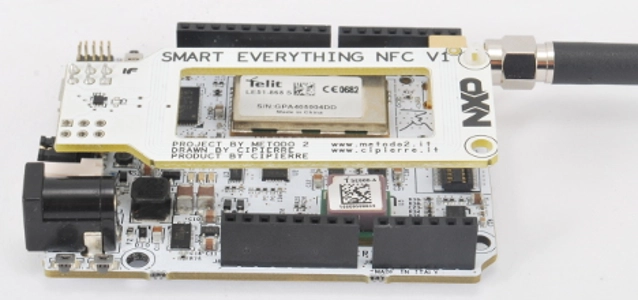
© arrow
General |
IoT: a roadmap to successful implementation
The Internet of Things is no longer just hype or imaginative ideas. Many sectors that are already planning how to make extensive use of the technology include the likes of banking, healthcare, retail, automotive, transport, energy and utilities, as well as the smart home arena.
Although IoT applications are creatively evolving and may take some time to reach peak volumes, the good news is that much of the essential groundwork has been done, most of the vital elements that will play a role in turning concepts into a reality are already here – and so is the expertise to bring everything together.
It's clear that IoT will be disruptive and the potential benefits of IoT look likely to outweigh the initial challenges of entering this new market. Of course, initial barriers are going to be system integration, cost of implementing the IoT technology and enabling scalable platform architectures & services. But reality is that global connectivity is already in place. Mobile communications, Bluetooth, Wi-Fi, GPS, 3G and 4G, NFC and RFID are commonplace, as are personal, local, metropolitan and wide area networks. Cloud storage is now widely used and being continually extended.
We already have remote banking, automated congestion charging, mobile payments, lifestyle monitoring, smart homes and the like. Forecasts indicate that by 2020 there could be as many as 50bn connected devices – assuming half of these connected devices are phones and tablets, we can expect more than 25bn new connected IoT nodes, all utilising wireless connectivity, data management & aggregation and protected through security IP & SW solutions.
But significant amounts of data being gathered and processed through today's connections are barely being analysed or made use of. Networks are being flooded with data and this data may not be being used to its full potential. In some cases it is dead data. Enabled through innovative IoT systems, manufacturers, service providers and other organisations will be able to modify, customise and even personalise their product offerings based on real time data. Asset, manufacturing processes, facilities management, city services and even product marketing will be so much more effective because the data would be available in real-time and would be analysed and updated on a continual basis enabling informed timely decisions to be made.
Essentially, IoT is going to be driven by four key elements: sensors, actuators, connectivity and data management (people and processes are a given). All data collected from devices that are connected via sensors and gateways will simply be shared through the cloud. However, what needs to happen before IoT truly alters the way industries and individuals operate is a much greater level of understanding about how to implement the technology and how to make the most of it. There also needs to be far more intelligent and reliable data and a wider appreciation of how using connected solutions could bring significant business benefits. IoT will inevitably involve a lot of change: there will be new technologies and standards to learn, new software and hardware to get to grips with and, of course, a vast range of different applications that can be created and deployed. Implementing and enabling IoT is going to be a critical part of many companies future growth. Successful scalable solutions can only be successful with unseen levels of co-operation and expert guidance from trusted partners. Through supplier partnerships, companies will have access to support all the elements needed to bring the Internet of Things into action and enable clients to reap the tangible benefits of this revolutionary technology.© Arrow
Specifically with wireless IoT nodes, one solution is to use 'plug and play' certified modules for initial designs.So what can be done to ensure companies address and overcome the complexity of IoT platform development and implementation? Marrying wireless connectivity with security, low power microcontrollers, long battery life, gateways and different software operating systems combined with big data storage and analytics is never going to be easy. Specifically with wireless IoT nodes, one solution is to use 'plug and play' certified modules for initial designs. The perceived higher cost of modules is easily mitigated through reduced design cycles and predictable low risk time to market. High quality development kits are also crucial tools for any IoT systems designer, not least in terms of software development. The kits not only support broad applications but they can mostly be re-used in subsequent designs. Even with these tools, design engineers putting together an IoT architecture will undoubtedly find it a confusing and time-consuming operation to select and source the best solutions for their needs. To counter this, many new specialists are going to emerge who can provide IoT-based solutions, including systems designers and integrators. And they are going to have to work with trusted partners who already have the knowledge mentioned earlier, skilled engineers who can cut through the fog of protocols, hardware and system development, delivering platforms and sub-systems that are going to be ready for use with IoT. There are companies like Arrow that can provide the key elements – system integration, connectivity, data management, optimisation and monetisation of networks, Big Data storage analysis and end nodes. Anyone looking to get on board the Internet of Things bandwagon needs to forge strong ties with such companies at the start of the project planning. ----- Author: Andrew Bickley, Arrow Electronics
